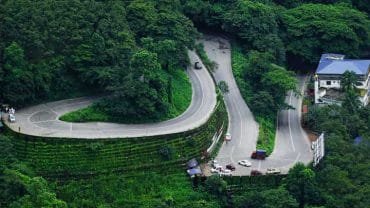The History and Beauty of Mirjan Fort: A Gokarna Treasure
Tucked away on the serene coast of Karnataka, near the coastal town of Gokarna, lies the remarkable Mirjan Fort. A gem of historical significance and architectural intrigue, Mirjan Fort is an underrated treasure that captures the essence of India’s rich heritage, natural beauty, and strategic military past. Whether you are a history buff, a nature lover, or simply someone looking for a tranquil escape, this fort offers something for everyone. In this blog, we will take a journey through the captivating history of Mirjan Fort, explore its architectural features, discuss its natural surroundings, and understand why it’s one of the best-kept secrets near Gokarna.
1. Mirjan Fort: A Glimpse into the Past
Mirjan Fort, located around 20 kilometers from Gokarna and close to the town of Uppinangadi, stands proudly as a symbol of the region’s turbulent history. Though not as famous as some of the larger forts in Karnataka, Mirjan Fort holds a significant place in the historical landscape of the coastal region. It is believed to have been built in the 16th century, and over the centuries, it witnessed various military conquests, cultural exchanges, and architectural transformations.
The fort’s origins are shrouded in mystery, but it is widely believed that it was initially built by the Bijapur Sultanate. Later, it came under the control of the Marathas and eventually fell into the hands of the British after their colonial expansion in India. This long history of occupation by different rulers has left an indelible mark on the fort’s structure and strategic importance.
The fort was strategically located near the Aghanashini River, which allowed easy access to the sea, making it a vital outpost for maritime trade and defense. The fort’s proximity to the coast meant that it was an important military base during its time, and its architectural design reflects the need for strong defenses against invaders.
2. Architectural Features of Mirjan Fort
One of the most intriguing aspects of Mirjan Fort is its architecture. Unlike many forts that follow traditional designs with large battlements and intricate carvings, the architecture of Mirjan Fort is simple, yet functional and practical. The fort is built using laterite stone, which is abundant in the region and is known for its durability in the tropical climate.
The fort features a rectangular layout, and its walls are sturdy but not as high or imposing as other forts in the region. The walls, which are about 30 feet high, were designed to protect the fort from both land and sea invasions. The main entrance to the fort is flanked by two large bastions, and the outer walls are punctuated with cannon holes—perfect for defending the fort during a siege. The simplicity of its design makes Mirjan Fort unique and different from other, more embellished forts in India.
While much of the fort’s inner structures are in ruins, you can still spot remnants of barracks, watchtowers, and guardrooms, all of which give you an insight into the fort’s military past. The mosque inside the fort, though in a dilapidated state, is a clear indication of the influence of Islamic rulers who once controlled the region.
One of the most fascinating features of Mirjan Fort is the water tank located within the fort premises. The tank was strategically placed to ensure that the fort had a reliable source of water during times of siege. This reflects the fort’s thoughtful design, keeping in mind the long durations of conflict that could take place.
As you wander through the fort’s ruins, you get a palpable sense of the past, imagining the sounds of soldiers preparing for battle, the bustle of activity, and the tension of guarding the coastline. The peaceful yet eerie atmosphere of Mirjan Fort invites both reflection and exploration.
3. Mirjan Fort and Its Strategic Importance
The location of Mirjan Fort was key to its strategic importance. It lies along the coast, near the mouth of the Aghanashini River, which made it a pivotal position for controlling access to the Arabian Sea. The fort was primarily used to defend the region from invaders coming from the sea and also served as a maritime trade post.
During its heyday, Mirjan Fort would have been bustling with activity as it guarded important sea routes. The Marathas were known for their naval prowess, and it is believed that the fort played a crucial role in their efforts to protect the coast from Portuguese and Dutch colonial powers. The fort’s strategic position allowed the Marathas to monitor the movements of enemy ships and protect the nearby regions from pirate attacks.
Additionally, the fort’s location made it an essential part of the coastal defenses of the Sultanate of Bijapur and later the Mughal Empire. The fort’s proximity to the port towns in the region meant that it played an essential role in controlling trade and maintaining peace along the coast. With its defensive walls, strategic positioning, and natural resources, Mirjan Fort was a highly valuable asset to the rulers of the time.
4. The Natural Beauty Around Mirjan Fort
One of the most unique aspects of Mirjan Fort is its location amidst natural beauty. The fort is nestled within lush green surroundings, with the Aghanashini River meandering nearby, creating a peaceful and scenic environment. The area is also home to several forests, which are rich in biodiversity and provide a natural habitat for a wide variety of flora and fauna.
Mirjan Fort is located within proximity to Mirjan Beach, which is a peaceful and less-commercialized alternative to the more popular beaches in the region like Gokarna Beach. The beach is relatively untouched, offering a quiet escape with soft golden sand and clear waters. The lush forested hills in the backdrop only add to the beauty of the landscape, making it an ideal spot for nature lovers and photographers.
The Aghanashini River, which flows near the fort, is another remarkable feature. The river is known for its serene beauty, and you can often spot boats making their way along the river, adding a sense of tranquility to the area. The riverbanks are dotted with coconut palms and lush greenery, creating a harmonious blend of nature and history.
The peaceful surroundings of the fort make it a great place to take a walk, meditate, or simply soak in the beauty of the landscape. The combination of history, nature, and serenity makes Mirjan Fort a perfect retreat for those looking to escape the hustle and bustle of everyday life.
5. Mirjan Fort as a Tourist Attraction
While Mirjan Fort may not be as famous as other historical sites in Karnataka, it has slowly started gaining attention from travelers due to its unique charm and quiet beauty. Unlike the more tourist-heavy sites in the region, Mirjan Fort offers an authentic experience for those seeking a less commercialized attraction.
A visit to the fort is an opportunity to step back in time and learn about the region’s past, all while enjoying the peace and tranquility of the surroundings. It is also a perfect spot for photography, with the mix of historical ruins, lush greenery, and breathtaking views providing plenty of opportunities to capture the essence of the place.
The proximity of the fort to Gokarna makes it an ideal addition to your itinerary if you are visiting the coastal town. After spending time exploring the sacred temples and beaches of Gokarna, a short drive to Mirjan Fort offers a chance to experience the area’s historical side, all while enjoying the stunning natural beauty.
Explore more Spiritual Trekking Pilgrimage Tours | Trekking Places Trails Around Tumkur and Bengaluru | Coorg Tour Packages | Kedarnath Trek
6. Best Time to Visit Mirjan Fort
The best time to visit Mirjan Fort is during the cooler months of October to March, when the weather is pleasant, and the landscape is at its most vibrant. The monsoon season (June to September) can make the trails slippery and difficult, and the fort is surrounded by thick greenery, which may obscure views.
7. How to Reach Mirjan Fort
Mirjan Fort is well-connected by road from Gokarna and nearby towns. It is approximately 20 km from Gokarna, making it easily accessible by car or local transport. The nearest major town is Uppinangadi, and from there, you can hire a taxi to reach the fort. The nearest railway station is Gokarna Road railway station, which is about 15 kilometers away from the fort.
8. Conclusion: A Hidden Gem Near Gokarna
Mirjan Fort is one of those rare places where history, nature, and peace converge to create a truly unique experience. Its architectural simplicity, historical significance, and the stunning natural surroundings make it a must-visit spot for anyone exploring the Gokarna region. Unlike more commercialized tourist destinations, Mirjan Fort offers a sense of quiet and solitude that allows visitors to immerse themselves in both the past and present. Whether you’re drawn to its history, the scenic landscapes, or the peaceful vibe of the area, Mirjan Fort will leave you with lasting memories and a deeper appreciation for the beauty of Karnataka’s lesser-known treasures.



Comment (0)